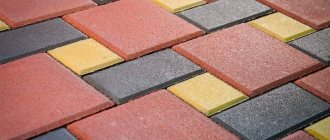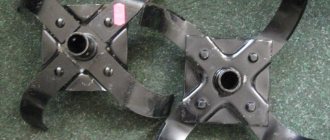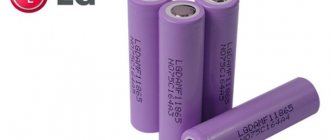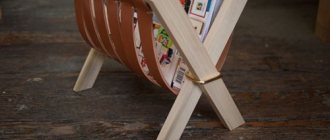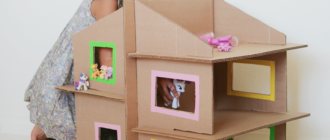- June 5, 2019
- Production
- Afanasyev Yuri
Who, as a child, or maybe even as an adult, didn’t dream of going karting? Given the opportunity, rarely did anyone refuse. Previously, many did not have extra funds for assembly, but now with access to a huge amount of practically free or simply very cheap materials, it is possible to assemble these small cars in the garage. Let's see how to make a go-kart from scrap materials and with little investment.
Children's karting "Pioneer"
Using this model as an example, let’s look at how to make a go-kart using improvised materials. This is one of the smallest sports racing cars. The engine capacity is only 50 cubic centimeters. These karts are built for racing, usually involving children under 16 years of age. If previously such children's cars were produced by industry, today they are created with their own hands - some in circles, some in garages. Unlike older equipment, the Pioneer model has certain design features. To better understand the process, this article provides a step-by-step description of the assembly. If something doesn't work out, you can improvise.
Where to get materials
If you decide to make a karting with your own hands, then first of all you need to decide what materials are available to you. If there is a car dismantling facility nearby or a collection point for ferrous/non-ferrous metals, then some of the units can be purchased there. At the car disassembly you can buy:
- armchair;
- pedals;
- pedal mounting block;
- axle shafts;
- steering wheel;
- steering shaft;
- steering knuckles;
- steering rods;
- pins;
- master and working cylinders of disc brakes.
All parts, except the seat, can be removed from old Soviet cars. It is advisable to remove the seat from a foreign car, it will be more comfortable. When selecting parts, check their condition - the kingpin and steering knuckles rotate without jamming, the brake cylinders are free of leaks, and other spare parts are not rusty.
At the collection point for ferrous or non-ferrous metals you can purchase:
- suitable gears;
- chains;
- metal pipes, corners, strips;
- wheels;
- motor;
- bearings.
Scheme development
Having selected the necessary materials, you can begin to develop the scheme. There is no generally accepted concept for the shape or size of a go-kart, so everyone builds what they like best. In most cases, the decisive argument is the availability of certain parts. There is a rule - the taller the person, the longer the homemade go-kart should be, otherwise a tall person will be very uncomfortable in a short car. If you bought a car seat along with a sled that allows it to move around the cabin, you can make a long go-kart with the ability to adjust the distance to the pedals. Thanks to this, even short people will not have any difficulties driving such a go-kart.
You can take any drawing posted on the Internet as a basis and adapt it to your materials or units. This is easier than drawing up a drawing from scratch, calculating the strength of the entire structure. When developing a diagram, it is necessary to take into account the features of attaching the seat to the frame, methods of installing brake cylinders and the size of the kingpins. Also pay close attention to the method of attaching the tie rods to the steering pendulum. On many homemade karts, the tie rods are made of a steel rod with a diameter of 8–15 mm, and the pendulum is made of a metal plate 5–7 mm thick. This scheme does not allow wheel toe adjustment, which is why there is a high probability of rapid tire wear. You can use welding to combine them with tie rod ends from cars, which will allow you to change the toe angle of the wheels, or you can do something similar yourself.
Recommendations for drawing
It is preferable to make drawings of the frame in its natural size on sheets of graph paper. For ease of working with such a schematic image, after drawing it is pasted onto thick cardboard. In the future, the drawing will serve as a model according to which other structural elements will be adjusted. The frame must be drawn in two projections - this is a side view and a top view. The front spar is shown separately. There are no exact dimensions of the go-kart frame, which means that such a go-kart can be made not only for a child, but various design details are adjusted locally.
Why does gasoline spoil in the tank, and how long can it be “stored” there? Refinery employee response
Many drivers have noticed that over time the characteristics of the fuel in the tank deteriorate. You can feel this without testing - the car drives worse, and the engine starts to run noisier. In normal times, this situation rarely occurs, since motorists manage to pump out fuel quickly enough. But now many drivers have cars sitting idle, so I decided to cover the topic of the “expiration date” of gasoline.
On the Internet you can find a lot of opinions about modern fuel.
It turned out that gasoline does have a certain shelf life, which depends on many factors. Leaded gasoline, well known to experienced drivers, could be stored for many years . Officially, its shelf life was 5 years, but in practice the fuel did not lose its properties for decades. Now the situation has changed, leaded gasoline has been banned. That is why fuel began to be stored less .
Slipway
Next you need to assemble a slipway, on which the go-kart frame will then be assembled. It is necessary when the machine will not be produced individually, but at least in a small series. At the base of the slipway there will be an aluminum sheet measuring 1,700 * 900 millimeters and at least 15 millimeters thick. A clear line is drawn along the long side - this is a trace of the plane of symmetry of the frame. The line perpendicular to the long one is the base point for mounting the pin bushing clamps.
The bushing holes are made on a boring machine. The result will be the required accuracy of installation of the bushings during welding work. Steel corners are also installed on the slipway to secure the longitudinal spars. The frame is assembled from two longitudinal spars, three cross members, a front bump stop and brackets for mounting the steering mechanism. For frame parts of a homemade go-kart, it is recommended to use a pipe made of 30KhGSA or pipes of the St20 brand.
How to test a homemade product
- Stay off the road.
- Wear personal protective equipment for karting drivers: helmet, knee pads, elbow pads, etc.
- The first couple of kilometers are for testing, running-in, checking the brakes, feeling the dynamics and controllability. You shouldn’t go to competitions right away.
- Do not accelerate your homemade go-kart to full speed. You can gradually increase the speed, feeling how the vehicle behaves when cornering. If you feel that, for example, at a speed of 40 km/h the car has a “crazy” vibration, then you will either have to drive up to that speed, or check the structure, perhaps something is bent.
Attention! The most important rule for any karting driver is to stay off the road. You can only ride on special sites and training grounds.
Preparing to assemble the frame
How to make a go-kart? First of all, cut the pipe, leaving an allowance of approximately 30 millimeters. Next, you need to bend it according to the drawing. This operation must be carried out without preheating.
There is also the most rational way to process a pipe - it is very simple to bend it to the desired angle with a spring made of OBC wire inserted inside the workpiece. Springs are made on lathes, and after coiling, normalization should be carried out. For a thick pipe you need wire with a diameter of 2.5 to 3.0 millimeters. For thinner ones - 1.5-2 millimeters.
The diameter of the spring must be such that it fits inside with a certain force. If the frame is assembled in winter, then water is frozen in it before bending. A good effect will be achieved by melted rosin, which is poured inside the pipe. The traditional method is to fill the pipe with calcined sand. It will be easier to bend if the place of the future bend is heated in the fire of a burner. But heating alloy steels reduces the elasticity and strength characteristics.
Assembly
When the workpieces have taken the desired shape, they are adjusted to each other so that there are no gaps in the joints. Assembly should begin by installing the front cross member on the slipway. Its middle part is aligned with the axis line on the slipway. Then a retainer and a pivot bushing are mounted on one side. The cross member is adjusted to the clamp so that a plane is obtained with an inclination of 30 degrees to the vertical plane. The same operation is performed on the reverse side of the slipway.
When the cross member is prepared, the spars are adjusted to it. The rear cross member is adjusted to them in the same way. A bump stop is attached to the front part. Each element must be fixed with brackets. Next, the position of each part and the structure as a whole is re-checked and adjusted. Welding work begins. The highest quality seams can be obtained if you work with argon-arc welding.
It is better not to use gas welding or to use it as a last resort. The frame is cooked in several stages. First, each joint is grabbed at several points. Only then do they boil it completely. While the frame is on the slipway, mounting brackets for the internal combustion engine and the rear axle of the go-kart are welded to the structure.
The middle cross member, axles for the pedals, brackets for the steering mechanism, and supports for the chair are welded only after the go-kart has been tested by those who will ride it. The seat at the bottom should be level with the bottom point of the side members. This landing will be correct. How to assemble the kart next? The last to be welded are the ears for attaching the floor, the front bumper tubes, and the gussets for connecting the side members to the cross member. Also at this moment, the ear of the gearshift lever is welded. The frame is already half the battle, after that the process speeds up somewhat and there are not many components left that need to be installed.
Brake system
Since the equipment will accelerate to significant speeds, do not forget about the braking system. The hubs of the bearing housings are made of aluminum casting and processed on metal-cutting machines. The brake system is a hydraulic disc mechanism. According to technical specifications, the Pioneer is equipped with only a pair of rear brakes. The disc is fixed on the rear axle. The mechanism will be installed on the frame. The caliper body is aluminum, the cylinder is made of steel, the piston is made of brass or aluminum. When installing the caliper, be very careful to center the brake disc.
Drive ratios, wheels
To select the optimal gear ratio of the rear axle chain mechanism, a set of driven sprockets is made with a number of teeth from 22 to 28. The interval is made every two teeth. This will make it easier to adjust the drive to the rider. The wheels for karting in this version are an aluminum disk - D16AM or LGM-6 alloys. A workpiece thickness of 2-3 millimeters is sufficient. The disc is obtained by extrusion.
First, a punch is sharpened from metal. Next, the workpiece is pressed against the punch using the tailstock, and the tool is rolled into the disk until it is in the shape of a punch. Knurling is carried out in the speed range from 150 to 300 per minute. The holes in the disk are drilled according to the template.
Method two: scratch cards
This option is much better and more interesting.
Firstly, the cards are wear-resistant. Secondly, such a deck looks much more impressive. Before work, prepare: scratch cards, office paper, double-sided tape, adhesive leaves (stickers), a marker of one or more colors, glue “pencil” and a laminator. Step 1. Glue pre-cut white paper onto each scratch card . Set the pieces aside for about 20-30 minutes.
Step 2. While the cards are drying, draw the card suits on sticky notes . It's great if you have 2 markers: black and red. If you are good at drawing, you can draw images of classic maps. For example, queen, king, ace. But the easiest way is to print them out and stick them on stickers.
Step 3. Attach the sticker to the card using double-sided tape . Just in case, leave the cards for another couple of hours. Don't fiddle with the deck trying to figure out what your result is!
Step 4. Pass the cards through the laminator . The result will be excellent “plastic cards” with a unique design.
Engine
If you only have a gasoline saw engine as a go-kart engine, then this is an excellent option. Such an engine is quite suitable for a drive with a single gear. However, here it is not possible to adjust the gear ratios, so the torque on the go-kart wheels will be the same both during acceleration and when driving.
If you manage to get the engine from the scooter, then you can use the gearbox with it. This way you can increase the torque during acceleration. Additionally, you will have to install a clutch and gear selection mechanism. If a motor from a scooter is installed, then a clutch is not needed - there is a variator inside. The gear ratio will change as the kart speed increases.

